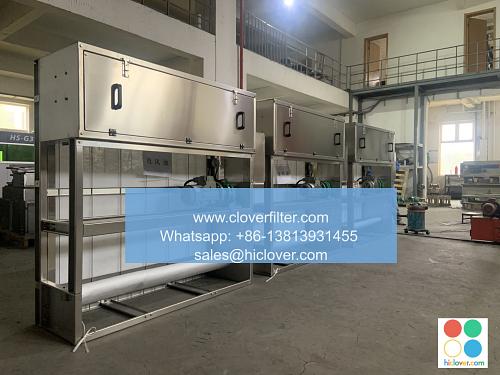Air Filter Technology for Reduction of Nano-Particulates

The increasing concern about air pollution and its impact on human health has led to the development of advanced air filter technologies. One of the most critical areas of focus is the reduction of nano-particulates, which are tiny particles that can penetrate deep into the lungs and cause significant harm. In this article, we will delve into the world of air filter technology and explore its applications in reducing nano-particulates.
Introduction to Nano-Particulates
Nano-particulates, also known as nanoparticles or ultrafine particles, are tiny particles that measure less than 0.1 micrometers in diameter. These particles can come from a variety of sources, including vehicle emissions, industrial processes, and natural sources such as wildfires. Due to their small size, nano-particulates can easily bypass traditional air filters and enter the lungs, where they can cause inflammation, oxidative stress, and even cancer.
Air Filter Technologies for Nano-Particulate Reduction
Several air filter technologies have been developed to reduce nano-particulates, including:
* HEPA (High Efficiency Particulate Air) filters, which can capture 99.97% of particles as small as 0.3 micrometers
* ULPA (Ultra Low Penetration Air) filters, which can capture 99.99% of particles as small as 0.1 micrometers
* Nano-fiber filters, which use electrospun nano-fibers to capture particles as small as 0.01 micrometers
* MEMS (Micro-Electro-Mechanical Systems) filters, which use microscopic structures to capture particles as small as 0.001 micrometers
Application Areas for Air Filter Technology
The application areas for air filter technology in reducing nano-particulates are diverse and widespread, including:
* Indoor air quality improvement in homes, offices, and public buildings
* Industrial process control in industries such as manufacturing, mining, and construction
* Transportation systems, including vehicles, airplanes, and trains
* Medical facilities, where clean air is critical for patient health and safety
* Environmental monitoring, where air filters are used to monitor and track air quality in urban and rural areas
Emerging Trends and Technologies
The field of air filter technology is constantly evolving, with emerging trends and technologies including:
* Nano-structured materials with enhanced filtration properties
* Artificial intelligence (AI) and machine learning (ML) algorithms for optimized filter performance and maintenance
* Internet of Things (IoT) connectivity for real-time monitoring and control of air quality
* Sustainable and eco-friendly filter materials made from natural and biodegradable sources
Conclusion
In conclusion, air filter technology plays a critical role in reducing nano-particulates and improving air quality. With its diverse range of applications, emerging trends, and technologies, the field of air filter technology is poised to continue its growth and innovation. As the concern about air pollution and its impact on human health continues to grow, the development of advanced air filter technologies will remain a vital area of research and development. By highlighting the various application areas and emerging trends, we can work towards a future where clean air is accessible to everyone, and the risks associated with nano-particulates are minimized. It seems like you didn’t include a prompt for me to respond to. Please go ahead and provide a question, topic, or task, and I’ll be happy to help!

